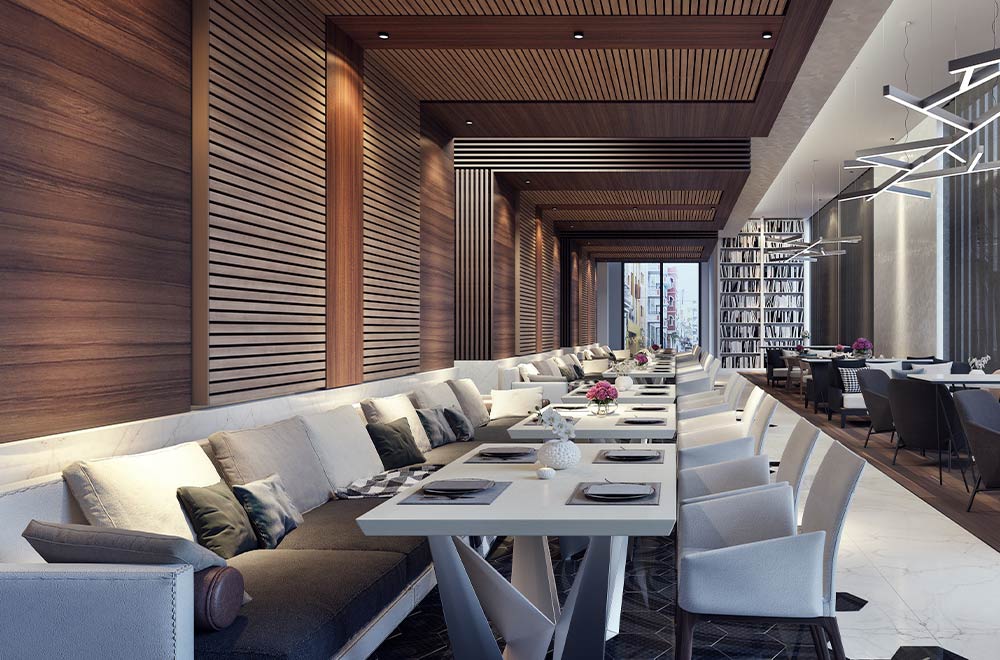Romantic Restaurants Islamabad: Ideal Dining Destinations for Pairs
Romantic Restaurants Islamabad: Ideal Dining Destinations for Pairs
Blog Article
Savor Authentic Asian Cuisine With a Pan-Asian Spin for a Cooking Experience
Beginning on a culinary journey through authentic Asian food, improved with a Pan-Asian twist, uses a special possibility to check out the rich tapestry of flavors that specify the area's varied cooking traditions. As you ponder these enticing dishes, consider the cultural narratives and historic influences that form them, each bite supplying a tale waiting to be uncovered. Romantic restaurants Islamabad.

Discovering Pan-Asian Flavors
In the world of worldwide gastronomy, Pan-Asian food sticks out for its exceptional variety and the harmonious interaction of tastes from different Asian societies. This culinary strategy celebrates the rich traditions and unique active ingredients discovered throughout the continent, creating a tapestry of preferences that is both appealing and satisfying. Secret to Pan-Asian food is its ability to balance contrasting tastes-- sweet, salty, spicy, and sour-- while highlighting the freshness and high quality of each ingredient.
From the umami-rich soy sauce of Japan to the fiery chili peppers of Thailand, Pan-Asian food provides a substantial palette of flavors. These aspects are often combined in inventive means, boosting dishes with layers of complexity. As an example, using fragrant natural herbs such as lemongrass and cilantro, typical in Vietnamese and Thai cuisine, includes a refreshing illumination to recipes, while the incorporation of coconut milk delivers a velvety, abundant structure.
The focus on fresh fruit and vegetables and aromatic seasonings ensures that each meal is not only a banquet for the taste buds but also for the senses. Pan-Asian food welcomes restaurants to start a cooking trip, checking out the huge and differed landscapes of Oriental gastronomy with every bite.
Combination Recipes to Attempt
While Pan-Asian food is celebrated for its conventional tastes, the contemporary cooking landscape is progressively accepting blend meals that mix these traditional aspects with influences from various other regions. This cutting-edge technique not just honors the rich heritage of Oriental cooking arts yet additionally introduces unique taste experiences that appeal to contemporary tastes buds.
An archetype of such a blend dish is the Korean-Mexican taco, where seasoned bulgogi beef is wrapped in a warm tortilla, topped with kimchi and a hot gochujang-infused salsa. This combination weds the strong, mouthwatering flavors of Korea with the lively, fresh elements of Mexican cuisine. Similarly, sushi burritos have obtained popularity, integrating the delicate creativity of Japanese sushi with the passionate, hand-held convenience of a burrito, usually including blend ingredients like tempura shrimp and avocado with a drizzle of wasabi mayo.
One more notable recipe is Thai curry ramen, which infuses the velvety, fragrant seasonings of Thai curry into the comforting broth of standard Japanese ramen, developing an unified blend that entices the detects. These blend recipes extend past simple uniqueness; they stand for a culinary dialogue between societies, urging expedition and advancement in the globe of Pan-Asian cuisine.
Necessary Active Ingredients and Spices
To genuinely appreciate Pan-Asian cuisine, one should comprehend the necessary components and seasonings that create its structure. This diverse culinary design draws from an abundant tapestry of Asian practices, using an unified mix of textures and tastes.
Fragrant aspects are critical, with lemongrass, ginger, and garlic being ubiquitous across numerous Pan-Asian dishes. These active ingredients supply an aromatic base that boosts the intricacy of tastes. Seasonings such as star anise, cardamom, and cinnamon present warmth and character, resembling influences from areas like China and India.

Cooking Techniques and Tips
Mastering the art of Pan-Asian cuisine needs knowledge with its distinctive cooking methods, each adding to the dynamic tapestry of tastes this cooking custom is celebrated for. Central to these techniques is the stir-fry, a quick cooking technique that protects the nutritional integrity and dazzling shades of ingredients. Utilizing a wok, the stir-fry method permits for also warmth circulation, vital for accomplishing the particular appearance and taste equilibrium of Pan-Asian meals.
Another fundamental strategy is steaming, specifically common in Chinese food. This gentle approach keeps the all-natural tastes and nutrients of ingredients, making it optimal for fish and shellfish and veggies. Dumplings, a beloved staple, commonly take advantage of steaming, resulting in soft, delicious appearances.
Cooking, also integral, imparts great smoky depths to meals such as Korean bulgogi or Japanese yakitori (Romantic restaurants Islamabad). This technique usually entails seasoning active ingredients, enabling flavors to pass through deeply before food preparation over an open fire or warmer
Finally, mastering the art of stabilizing helpful hints tastes-- wonderful, sour, great site salted, bitter, and umami-- is crucial. Properly layering these components can boost a dish from regular to phenomenal, offering a complicated and satisfying cooking experience that embodies the significance of Pan-Asian cuisine.
Eating Experiences Worldwide
Around the world, Pan-Asian cuisine uses an unmatched eating experience, celebrated for its abundant tapestry of tastes and dynamic discussions. This culinary sensation has gone beyond cultural borders, capturing the hearts and palates of food lovers worldwide. In cosmopolitan cities fresh York, London, and Sydney, Pan-Asian restaurants function as melting pots where culinary practices from Thailand, Japan, China, and past converge, supplying diners with an eclectic mix of recipes that highlight the region's variety.
The international appeal of Pan-Asian cuisine depends on its capability to supply both credibility and technology. Chefs skillfully marry standard active ingredients such as lemongrass, soy sauce, and miso with contemporary techniques, resulting in meals that are both acquainted and refreshingly new. This combination enables restaurants to begin on a cooking trip that appreciates heritage while accepting modernity.
In addition, dining experiences are boosted through thoughtfully created environments that show the values of Pan-Asian visual appeals. From minimal Japanese-inspired interiors to vivid Thai-themed areas, each dining establishment supplies a special ambiance that matches the cooking offerings. Because of this, clients are not merely eating a meal yet partaking in a cultural experience, making Pan-Asian eating a really worldwide sensation.
Final Thought
The expedition of Pan-Asian cuisine uses an extensive understanding of the intricate interplay of tastes and culinary practices throughout Asia. By welcoming fusion recipes such look at this web-site as Thai curry ramen and sushi burritos, the culinary trip not just highlights the flexibility of conventional components however additionally showcases ingenious modern-day techniques. This gastronomic experience, enriched by essential spices and cooking methods, offers a distinct chance to value the social diversity and cooking artistry that define Pan-Asian food on a global scale.
Beginning on a cooking journey through genuine Eastern cuisine, enhanced with a Pan-Asian twist, provides an unique possibility to discover the abundant tapestry of tastes that specify the region's varied culinary practices.In the realm of worldwide gastronomy, Pan-Asian cuisine stands out for its impressive diversity and the harmonious interplay of flavors from different Oriental societies. Key to Pan-Asian cuisine is its capability to stabilize contrasting tastes-- sweet, salty, spicy, and sour-- while highlighting the freshness and top quality of each component.

Report this page